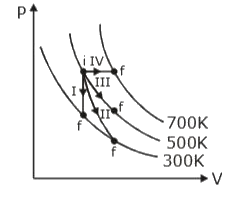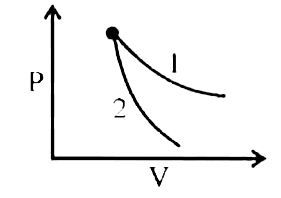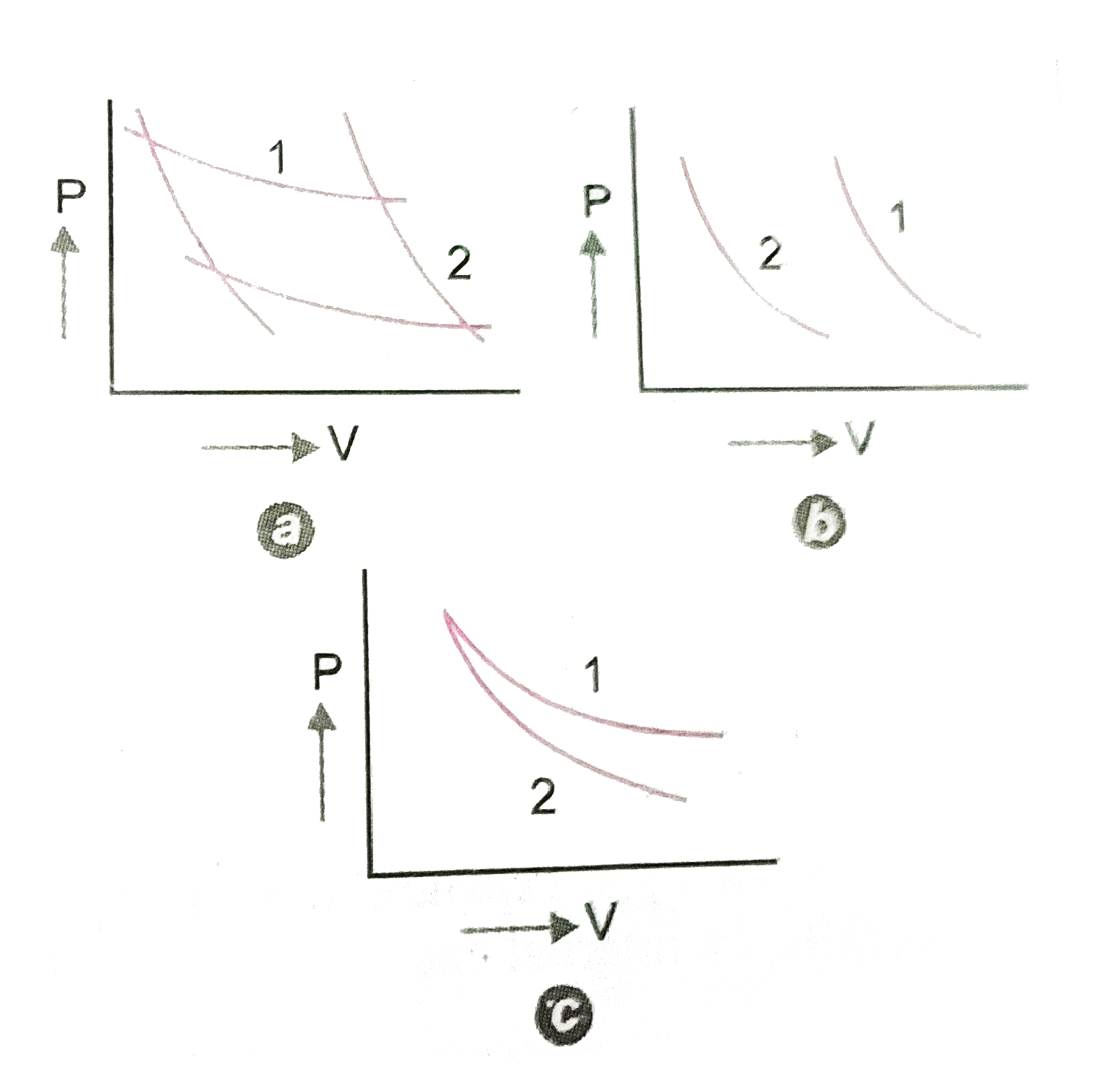In the following plots match I,II, III,Iv with (a) isothermal process and Adiabatic process for (b) monatomic, (c ) diatomic and (d) triatomic gases respectively.

Text Solution
For isothermal process pV = const. (∴n=1) (Note all the above graphs are basically pV^n = const. piotted)
For Adiabati process pV. = const. Now,
For monotomic gas γ=53=1.66(∴n=1.66)
For diatomic gas γ=75=1.4(∴n=1.4)
and for triatomic gas γ=86=1.33(∴n=1.33)
In expansion p-V graph we know that as the value of .n. increases the plot keeps coming down.
So, we can represent the graphs as follows :
Hence the final answer is that
Plot I. is isothermal process
Plot II is Triatomic adiabatic
Plot III is diatomic adiabatic &
Plot IV is monoatomic adiabatic.

|
Topper's Solved these Questions
- THERMODYNAMICSBOOK - AAKASH INSTITUTECHAPTER - THERMODYNAMICSEXERCISE - TRY YOURSELF
12 Videos
- THERMODYNAMICSBOOK - AAKASH INSTITUTECHAPTER - THERMODYNAMICSEXERCISE - EXERCISE
19 Videos
- THERMODYNAMICSBOOK - AAKASH INSTITUTECHAPTER - THERMODYNAMICSEXERCISE - Assignment (Section-J) Aakash Challengers Questions
5 Videos
- THERMAL PROPERTIES OF MATTERBOOK - AAKASH INSTITUTECHAPTER - THERMAL PROPERTIES OF MATTEREXERCISE - Assignment (Section-J) Akash Challengers Questions
7 Videos
- UNITS AND MEASUREMENTSBOOK - AAKASH INSTITUTECHAPTER - UNITS AND MEASUREMENTSEXERCISE - ASSIGNMENT (SECTION - D)
15 Videos
Similar Questions
Knowledge Check
PV=nRT holds good for
A) Isobaric process
B) Isochoric process
C) Isothermal process
D) Adiabatic processAA & BBA,B & CCA,B & DDAllThermodynamic processes are indicated in the following diagram.

Match the following :
Column-1 Column-2
P. Process I a. Adiabatic
Q. Process II b. Isobaric
R. Process III c. sochoric
S. Process IV d. IsothermalAp → c, Q → a, R → d, s → bBp → c, q → d, R → b, S → aCP → d, Q → b, R → b, s → cDp → a, Q → c, R → d, S → bThe internal energy of a system remains constant when it undergoes
(i) a cyclic process
(ii) an isothermal process
(iii) an adiabatic process
(iv) any process in which the heat given out by the system equal to the work done on the systemA(i),(iii)B(ii)C(ii),(iv)D(i),(ii),(iv)
Define the following terms :
(i) System
(ii) Isothermal and adiabatic process
View SolutionExplain
(i) Reversible and irreversible process
(ii) Isothermal and adiabatic process.
View SolutionP.V plots for two gases during adiabatic processes are shown in the figure Plots 1 and 2 should correspond respectively to

View SolutionThe internal energy of a system remains constant when it undergoes
(i) a cyclic process
(ii) an isothermal process
(iii) an adiabatic process
(iv) any process in which the heat given out by the system equal to the work done on the system
View SolutionP - V plots for two gases, undergoing adiabatic processes are as shown in the figure.

Plots 1 and 2 should correspond respectively to
View Solution

